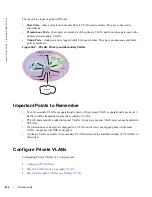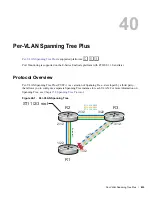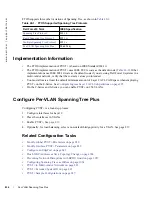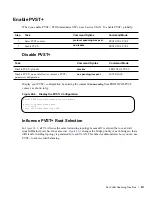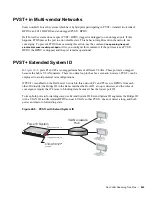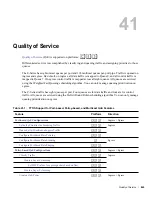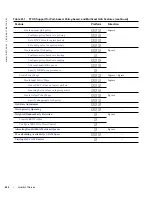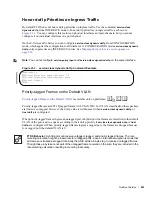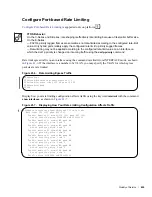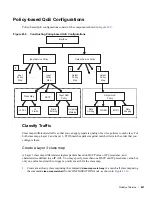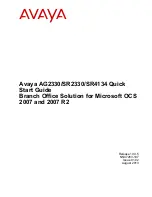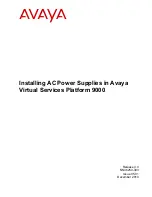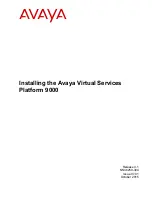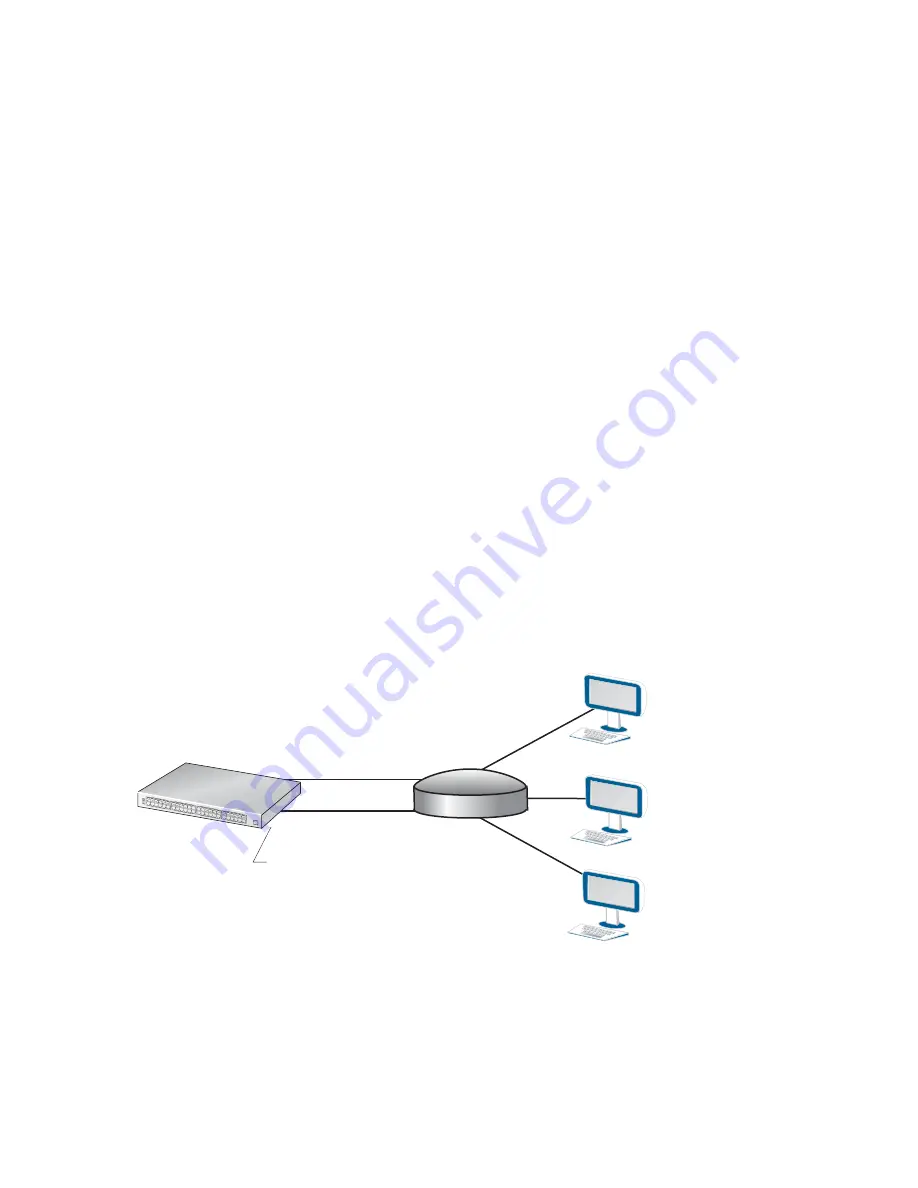
Per-VLAN Spanning Tree Plus |
845
PVST+ in Multi-vendor Networks
Some non-Dell Force10 systems which have hybrid ports participating in PVST+ transmit two kinds of
BPDUs: an 802.1D BPDU and an untagged PVST+ BPDU.
Dell Force10 systems do not expect PVST+ BPDU (tagged or untagged) on an untagged port. If this
happens, FTOS places the port in error-disable state. This behavior might result in the network not
converging. To prevent FTOS from executing this action, use the command
no spanning-tree pvst
err-disable cause invalid-pvst-bpdu
. After you configure this command, if the port receives a PVST+
BPDU, the BPDU is dropped, and the port remains operational.
PVST+ Extended System ID
In
Figure 40-5
, ports P1 and P2 are untagged members of different VLANs. These ports are untagged
because the hub is VLAN unaware. There is no data loop in the above scenario, however, PVST+ can be
employed to avoid potential mis-configurations.
If PVST+ is enabled on the Dell Force10 switch in this network, P1 and P2 receive BPDUs from each
other. Ordinarily, the Bridge ID in the frame matches the Root ID, a loop is detected, and the rules of
convergence require that P2 move to blocking state because it has the lowest port ID.
To keep both ports in forwarding state, use Extend System ID. Extend System ID augments the Bridge ID
with a VLAN ID to differentiate BPDUs on each VLAN so that PVST+ does not detect a loop, and both
ports can remain in forwarding state.
Figure 40-5. PVST+ with Extend System ID
VLAN unaware
Hub
Force10 System
P1
untagged in VLAN 10
P2
untagged in VLAN 20
X
moves to blocking unless
Extended System ID is
enabled
Summary of Contents for Force10 E300
Page 1: ...FTOS Configuration Guide FTOS 8 4 2 7 E Series TeraScale C Series S Series S50 S25 ...
Page 32: ...32 w w w d e l l c o m s u p p o r t d e l l c o m ...
Page 132: ...132 802 1X w w w d e l l c o m s u p p o r t d e l l c o m ...
Page 310: ...310 Configuration Replace and Rollback w w w d e l l c o m s u p p o r t d e l l c o m ...
Page 330: ...330 Dynamic Host Configuration Protocol w w w d e l l c o m s u p p o r t d e l l c o m ...
Page 402: ...402 High Availability w w w d e l l c o m s u p p o r t d e l l c o m ...
Page 462: ...462 Interfaces w w w d e l l c o m s u p p o r t d e l l c o m ...
Page 482: ...482 IPv4 Addressing w w w d e l l c o m s u p p o r t d e l l c o m ...
Page 506: ...506 IPv6 Addressing w w w d e l l c o m s u p p o r t d e l l c o m ...
Page 582: ...582 Layer 2 w w w d e l l c o m s u p p o r t d e l l c o m ...
Page 642: ...642 Multicast Source Discovery Protocol w w w d e l l c o m s u p p o r t d e l l c o m ...
Page 662: ...662 Multiple Spanning Tree Protocol w w w d e l l c o m s u p p o r t d e l l c o m ...
Page 690: ...690 Object Tracking w w w d e l l c o m s u p p o r t d e l l c o m ...
Page 754: ...754 PIM Dense Mode w w w d e l l c o m s u p p o r t d e l l c o m ...
Page 784: ...784 PIM Source Specific Mode w w w d e l l c o m s u p p o r t d e l l c o m ...
Page 800: ...800 Power over Ethernet w w w d e l l c o m s u p p o r t d e l l c o m ...
Page 876: ...876 Quality of Service w w w d e l l c o m s u p p o r t d e l l c o m ...
Page 892: ...892 Routing Information Protocol w w w d e l l c o m s u p p o r t d e l l c o m ...
Page 1006: ...1006 Simple Network Management Protocol w w w d e l l c o m s u p p o r t d e l l c o m ...
Page 1018: ...1018 SONET SDH w w w d e l l c o m s u p p o r t d e l l c o m ...
Page 1048: ...1048 Broadcast Storm Control w w w d e l l c o m s u p p o r t d e l l c o m ...
Page 1096: ...1096 Uplink Failure Detection UFD w w w d e l l c o m s u p p o r t d e l l c o m ...
Page 1098: ...1098 Upgrade Procedures w w w d e l l c o m s u p p o r t d e l l c o m ...
Page 1196: ...1196 C Series Debugging and Diagnostics w w w d e l l c o m s u p p o r t d e l l c o m ...
Page 1252: ...1252 Standards Compliance w w w d e l l c o m s u p p o r t d e l l c o m ...
Page 1262: ...1262 Index w w w d e l l c o m s u p p o r t d e l l c o m ...


